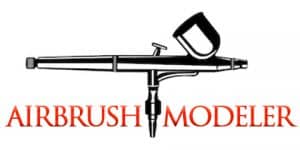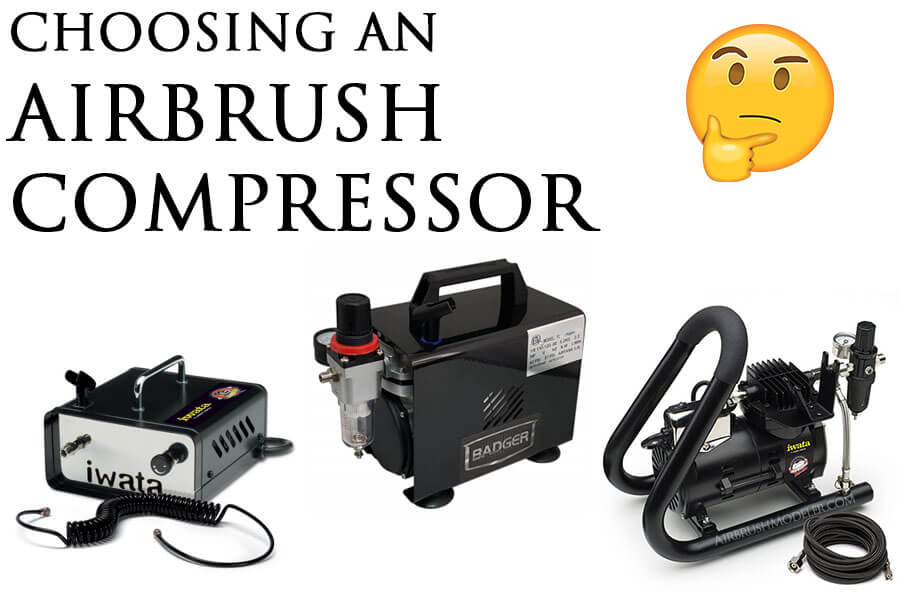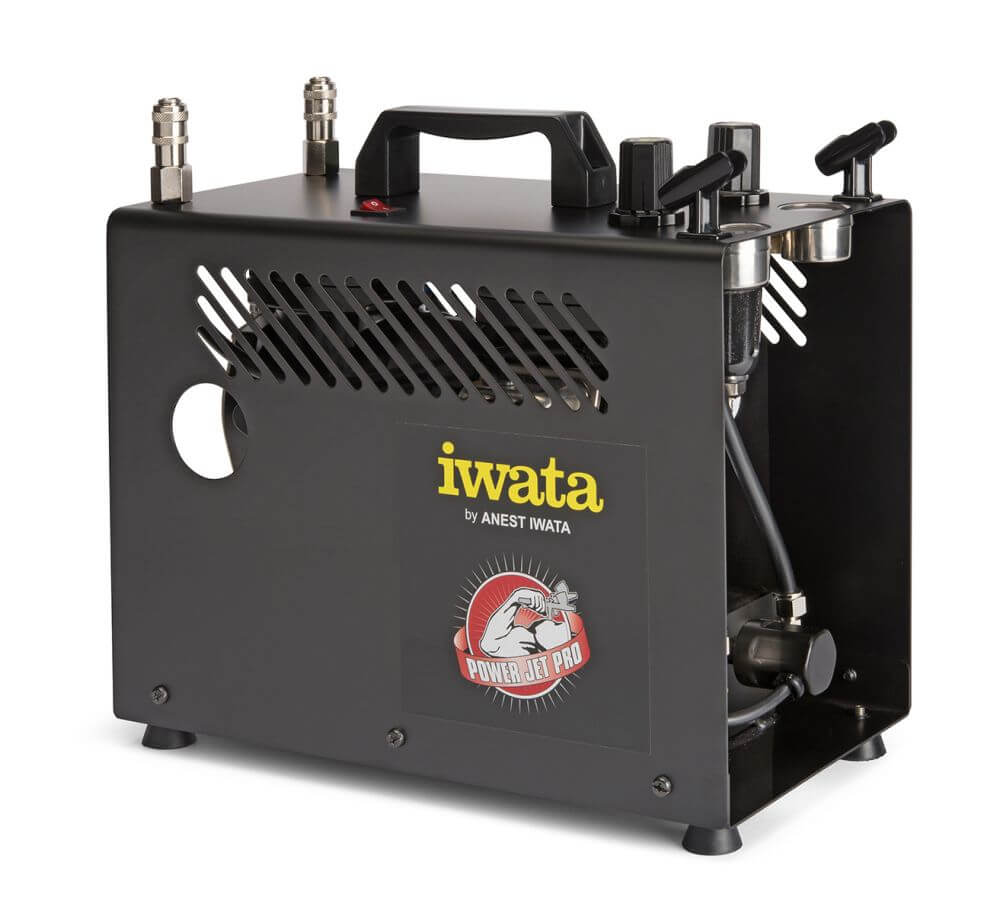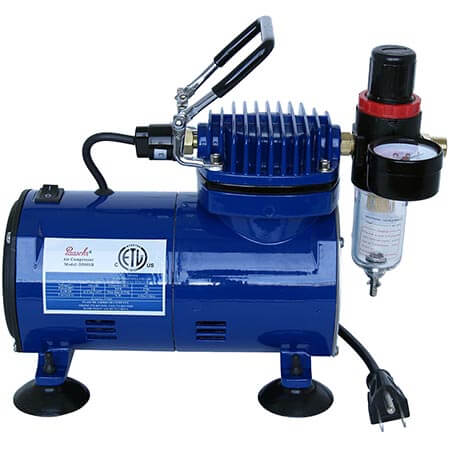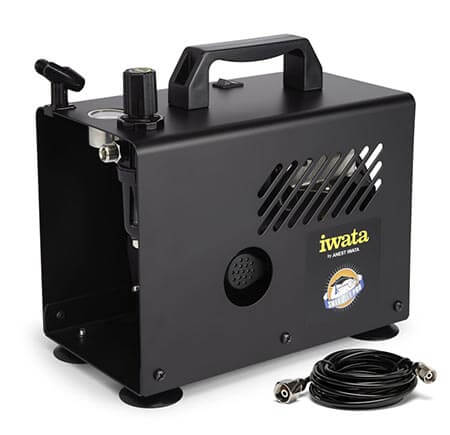Like a siphon feed and side feed airbrush, a gravity feed airbrush needs a source of compressed air, usually provided by an airbrush compressor.
Regardless of the airbrush type, the paint being held in the airbrush paint cup needs to be introduced into a high pressure airstream, which is the sole purpose of an airbrush, so that it can atomise into a mist that is then sent in a perfect spray pattern onto your job.
So why do people ask if a gravity feed airbrush needs a compressor?
When I was young and had no clue about airbrushes I also asked this question…
…my assumption was that gravity was enough to pull the paint down into the airbrush which then somehow got it to the item that was to be painted, and I simply didn’t understand that compressed air was still required, nor did I understand fully how an airbrush actually works.
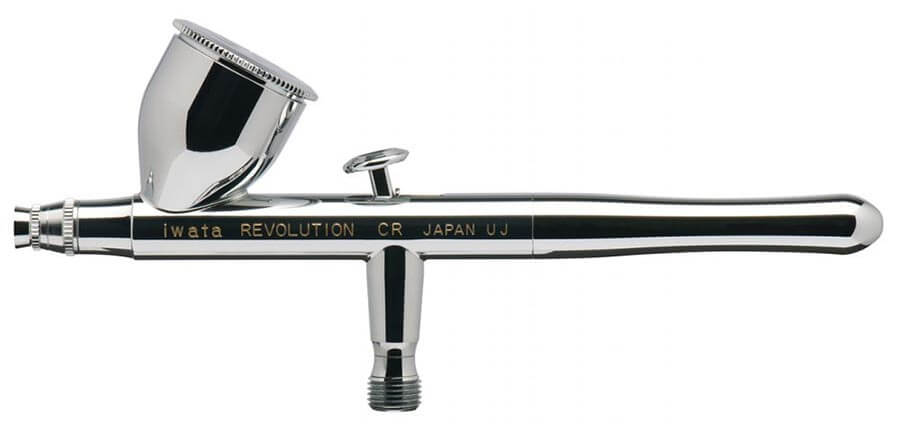
A gravity feed airbrush is called gravity feed because the paint cup sits on top of the airbrush body, and gravity does a large portion of the work in pulling the paint down into the atomisation chamber where it is introduced into the airflow for spraying onto your work.
This is opposed to a siphon feed and side feed airbrush which uses the pressurised airflow to pull or suck the paint up from a paint cup into the atomisation chamber.
The misunderstanding usually arises where a person realises that gravity pulls the paint down into the airbrush but doesn’t quite understand fully how the airbrush then gets the paint onto the work, assuming in error that somehow gravity also makes this happen.
👍 To see an in-depth article on the differences, advantages and disadvantages of siphon feed airbrushes compared to gravity feed airbrushes check out this article.
However, a powered air compressor is not necessarily the only way to provide compressed air to your airbrush…
Can You Use An Airbrush Without A Compressor
Yes, you can use an airbrush without a powered air compressor by obtaining compressed air in a can or compressed CO2 (carbon dioxide) in a tank.
Compressed Air Propellant Pressure Can For Airbrushing
An Airbrush Propellant Can should be considered similar to a regular can of spray paint, except that instead of spray paint it delivers compressed air to a connected airbrush, with the airbrush then spraying the paint onto the job.
Compressed air cans are suitable only for small jobs that don’t required extended airbrushing as they do not have very much compressed air inside them.
For example, the airbrush propellant can below from reputable airbrush manufacturer Paasche will provide around 10 to 15 minutes of compressed air in an average airbrush.
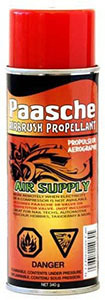 | Paasche Airbrush N-12 Air Propellant Pressure Can | Click For Reviews And Current Prices On Amazon 👍 |
They are, however, exceptionally good for transporting when you want to do some airbrushing away from the home, workshop, or wherever you normally paint.
However that’s where their advantage largely ends…
Pro’s And Cons Of Airbrush Propellant Cans
| Pro’s | Cons |
| Cost Effective: Relatively cheap if you airbrush sparingly. | Stupid Expensive: If you do a lot of airbrushing the cost will get ridiculous and they’re not practical at all. |
| Silent: Only the sound of the air and paint mixture spraying from the airbrush is audible. | Limited Use: You’ll likely max out at around 15 minutes of airbrushing per can. |
| Portable: Easy to transport anywhere, but do not take them on aircraft. | Air Pressure Limitations: The air pressure drops as the compressed air is used. |
| Good Air Quality: No need for a moisture trap as the air is already very dry. | No Pressure Regulator: You cannot manually change the pressure delivered, you simply get what you get. |
Pre-Filled CO2 Tank For Airbrushing
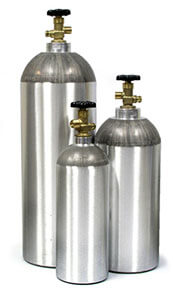
CO2 tanks are tanks filled with carbon dioxide or regular air that an airbrush can be connected to.
They can be relatively small, perhaps a few times larger than a compressed air can, or extremely large for industrial workshops.
The air can be compressed significantly more in a CO2 tank and the tank itself will sometimes come with an air pressure regulator, or one can be easily installed for greater control over the working pressure delivered to your airbrush.
👍 For more detailed information on exactly how to set the perfect pressure for your airbrush check out this action-plan article.
The tanks are portable to the extent that you can physically pick them up, with the smaller ones being light enough that moving them around is not problematic at all.
Best of all they’re able to provide a significantly longer duration of compressed air than the smaller disposable air propellant cans, and they can also be refilled as needed.
Check out the quick video below for information on CO2 tank setup and how to correctly and safely connect it to an airbrush:
Pro’s And Cons Of CO2 Tanks
| Pro’s | Cons |
| Longer Duration Of Working Air Pressure | Weight: Can be heavy if you get a large tank, which doesn’t matter too much if it’s not being moved however. |
| Silent: Only the sound of the air and paint mixture spraying from the airbrush is audible. | Up Front Cost: The upfront cost will, of course, be more expensive than an air propellant can. |
| Cost Effective: A cheaper option over the long term than air propellant cans. | Ongoing Refills: You have the hassle of taking them to get refilled plus the expense of refilling. |
| Good Air Quality: No need for a moisture trap as the air is already very dry. |
So there you have air propellant cans and larger CO2 tanks, which are great options for some people, but at the end of the day you usually can’t be a dedicated airbrush compressor as the most advantageous way to get your compressed air to your airbrush.
Let’s quickly look at compressors in more detail to understand why this is…
What Kind Of Compressor Do I Need For Airbrushing
The best dedicated airbrush compressor for your needs is one that has specific features that will make it suitable for the location you’re airbrushing in and the airbrushing job you want to do, as not all airbrush compressors are made equal.
For example, of all the compressors you look at the one you choose to buy will depend on many factors such as noise minimisation, its portability, power and pressure requirements, airbrush connection types, and many other variables.
👍 For more in-depth information on airbrush compressors and figuring out exactly the compressor that is perfect for you, see this massively detailed and helpful “action-plan” article on what to look for when buying a new compressor which also includes examples.
Airbrush Compressor Advantages
But, if you’re stuck on whether to actually choose a dedicated powered air compressor over an air propellant can or CO2 tank, here are the advantages of an airbrush compressor over the other options:
- No Ongoing Costs: once you buy your ideal airbrush compressor that’s it, there’s nothing more to pay unless you need it fixed for some reason (unlikely with reputable brands, which should last you for decades if taken care of).
- Portability: many dedicated airbrush compressors come with handles for super easy transport to wherever you need to go. 👍
- Air Pressure Regulation: many airbrush compressors ship with an air pressure gauge and pressure regulator installed, so you can manually fine-tune the exact working air pressure you need. This may be possible on a CO2 tank but won’t be possible on an air propellant can.
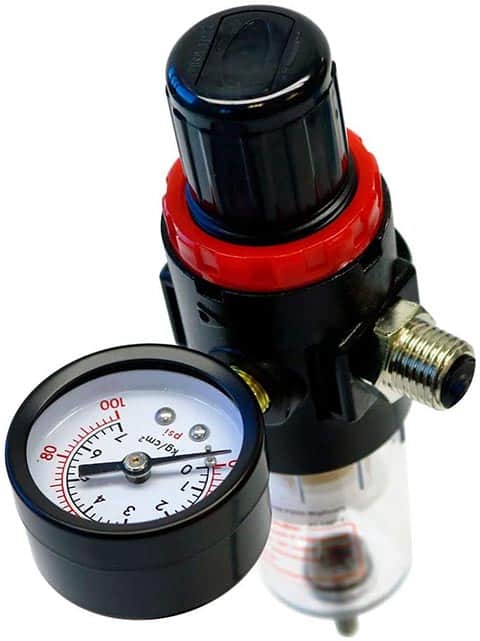
- Plug-And-Play Airbrush Connections: most airbrush companies make their own airbrush compressors and virtually their entire range will be compatible. Additionally, they will often ship their compressors with fittings to also fit other popular brand airbrushes. This can’t always be said air propellant cans and will pretty much never happen with CO2 tanks, forcing you to buy additional parts.
- Airbrush Holder: some airbrush compressors ship with airbrush holders mounted on the compressors itself which is massively handy, otherwise where are you going to put your airbrush when not in use…? Sure you can buy aftermarket airbrush holders if you’re using an air propellant can or CO2 tank, but it’s just yet another expense you have to fork out for. 🙄
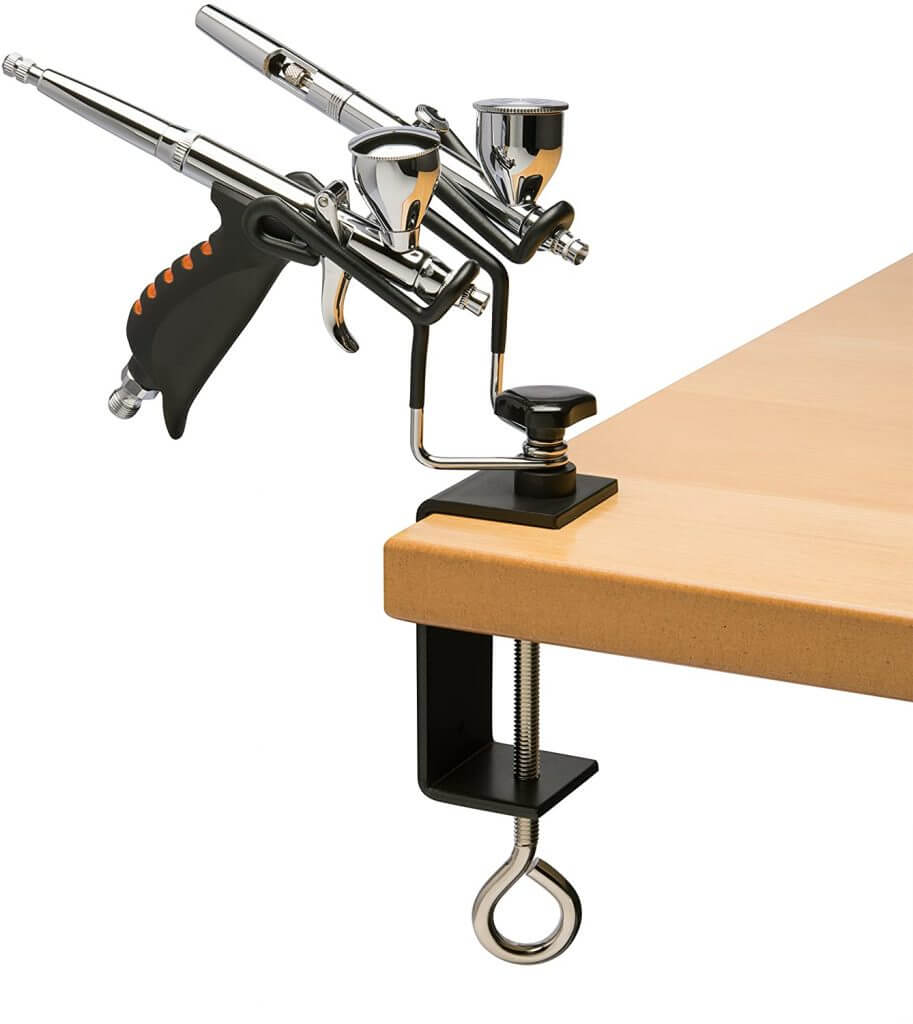
- Multi-Airbrush Capable: there’s no way an air propellant can will handle two or more airbrushes at once, and a CO2 tank may be able to do it but it will take additional investment in new fittings to make it possible which could get expensive. However the right choice of airbrush compressor will allow you to run at least two airbrushes at the same time if you choose to do so, with separate fittings for each air brush and separate air pressure gauges and regulators. 👊
Below are some examples of very popular dedicated airbrush compressors from reputable brands which you can click through to see detailed reviews and current prices, and assess if any of them are perfect for your needs…
Compressor Brand & Type | Feature Highlight | |
Paasche D500SR | Handy Carry Handle + Pressure Gauge & Regulator | |
For reviews and current prices on the Paasche D500SR see the Amazon listing here | ||
Iwata Smart Jet Pro | Handy Carry Handle + Pressure Gauge & Regulator + Airbrush Holder | |
For reviews and current prices on the Iwata Power Jet Pro see the Amazon listing here | ||
Badger Aspire Pro TC910 | Multi Airbrush Capable + Pressure Gauge & Regulator + Small Air Tank | |
For reviews and current prices on the Badger Aspire Pro TC910 see the Amazon listing here | ||
Sparmax TC 501N | Handy Carry Handle + Pressure Gauge & Regulator | |
For reviews and current prices on the Sparmax TC 501N see the Amazon listing here | ||
👍 Again, if you’re undecided on what type of airbrush compressor is perfect for your needs check out this detailed action-plan article on choosing the best airbrush compressor for you.
👍 And if you’re on the fence about whether a gravity feed airbrush is actually the right choice, check out this article on gravity feed airbrushes vs siphon feed, and learn why you would choose one over the other.
Now, having gone over all of these compressed air options, there may be one more question on your mind…
Can You Use Any Air Compressor For Airbrushing
Yes, technically you can use any compressor and you are not limited to a dedicated airbrush compressor, you can use a regular workshop air compressor for airbrushing provided you have the right fittings to connect your airbrush to it, and this is consistent for all airbrush types including gravity feed.
Generally speaking your workshop or industrial compressor will usually have ¼ inch female style quick-connect fittings.
The easiest way to connect an airbrush to this fitting is to use a ¼ inch quick-connect fitted hose that has a threaded ¼ inch NPT connector on the other end, that way you can connect your airbrush hose directly to the NPT connector and you’re good to go. 👍
This is a common way of connecting and airbrush to a regular workshop compressor however you should always double check the fittings installed and required to purchase for any compressor you’re considering purchasing.
As you can see there are numerous options for connecting a gravity feed airbrush to a compressed air source, you simply need to assess which is best for your own personal circumstances and airbrushing needs. 👍
